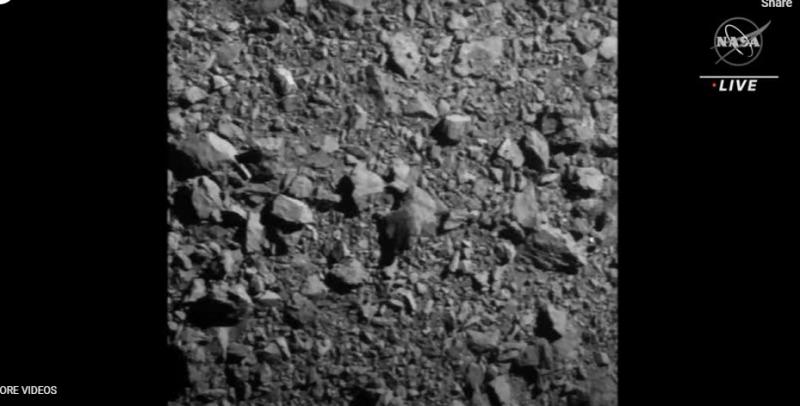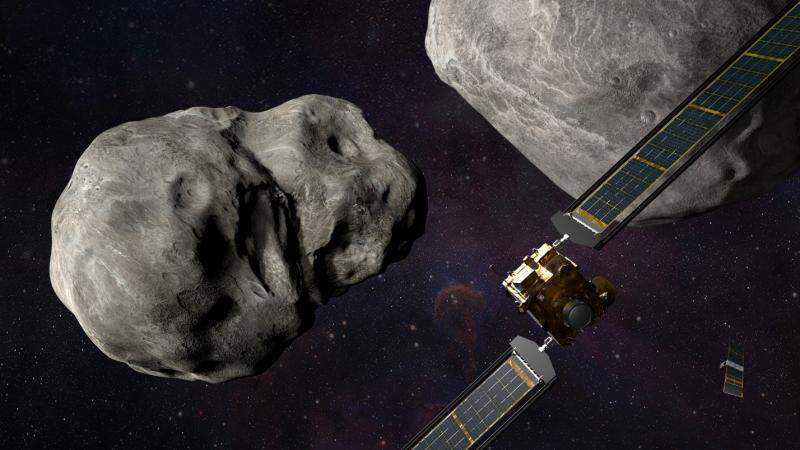The world witnessed the autonomous DART spacecraft successfully crash into the small, egg-shaped Dimorphos asteroid 7 million miles from Earth on Monday, in a NASA test of a planetary defense system.
The Double Asteroid Redirection Test showed how a spacecraft can autonomously navigate to target an asteroid and intentionally collide with it to change its motion so much that it can be measured by ground-based telescopes.
"We are showing planetary defense is a global endeavor and it is possible to save our planet," NASA Administrator Bill Nelson said moments after the successful collision was received on Earth.
Data from the DART mission will help NASA and other agencies and scientists around the world prepare for an asteroid that might impact Earth, should one ever be discovered in coming decades. So far, scientists believe no known asteroid threatens our planet for the next 100 years.
Dimorphos js only 530 feet across and orbits a bigger asteroid named Didymos, about a half-mile across. Scientists believed the collision by the DART unmanned spacecraft would change the orbit of Dimorphos to be detected by sophisticated telescopes, then use that data to compare with computer simulations of crashes with asteroids. Then, scientists can plan measures to deal with threatening asteroids, including breaking them up or moving them away from Earth, if needed.
One researcher said the spacecraft’s impact on Dimorphos would be comparable to crashing a small golf cart into a pyramid in Egypt, but that could be enough to evaluate changes in its orbit. The spacecraft struck Dimorphos at 4 miles per second, about 13,000 mph or 200 times faster than a car on a freeway. A ride-along CubeSat built by the Italian Space Agency separated from DART to observe the collision and will send back images.
A DRACO camera system aboard DART recorded its approach and compared the images it saw through sensors with its location in space to assist guidance.
Images sent back to Earth took about a minute to arrive, given the distance and processing required.The actual collision was at 7:14 p.m. EDT.
Dr. Tom Statler, DART Program Scientist said the imagery will give insights into the geology of asteroids, even as guidance was essential.
Images taken shortly before the collision indicate rubble on the surface of Dimorphos.

